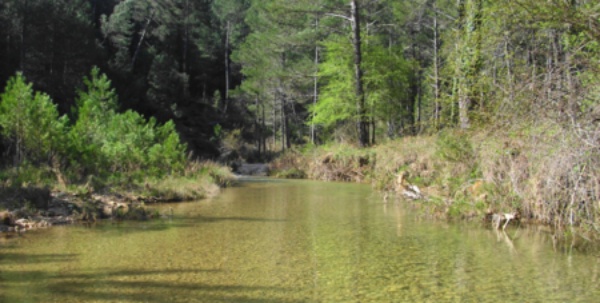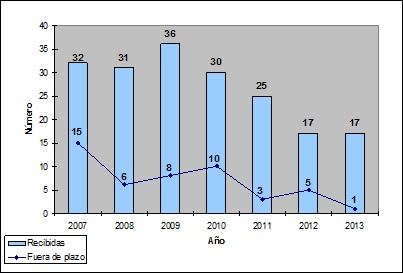WARNING: To exercise the right of access to public information, under the protection of Law 19/2013, of December 9, on transparency, access to public information and good governance, you can make a general request that you will find in the section on Formalities.
Finally, if what you want is to make a complaint or suggestion, we invite you to consult the specific section on Complaints and Suggestions, which will facilitate their formal presentation.
Law 27/2006, of July 18, which regulates the rights of access to information, public participation and access to justice in environmental matters, defines in its art. 2.3 environmental information, such as “all information in written, visual, sound, electronic form or in any other way to be seen on the following issues:

Calamón común (Porphyrio porphyrio). Río Segura. Guardamar, Alicante.
Any person, physical or legal, as well as their associations, organizations and groups constituted in accordance with the regulations that apply to them.
In order to request environmental information provided by the Hydrographic Confederation of Segura, either directly or through other subjects who hold it on its behalf, an application addressed to this body must be submitted in any of the means provided in article 38.4 of Law 30 / 1992, dated 26 November, on the Legal Regime of Public Administrations and Common Administrative Procedure.
The term to resolve is 1 month from the receipt of the application in the registry of the Segura Hydrographic Confederation. However, if the volume and complexity of the information requested is such that it is impossible to comply with it, the agency may resolve within 2 months of receipt of the request at the registry. In this case, you must inform the applicant within a maximum period of 1 month of this extension and the reasons justifying it.
Requests addressed to this Confederación Hidrográfica del Segura, will be resolved by the Commissioner of Waters based on paragraph 1 (1) of article 2 of the Resolution of April 24, 2012, of the Segura Hydrographic Confederation, on the delegation of Competencies.
When information is requested from this body of which the latter is not aware or does not dispose of it, the request will be forwarded to the public authority that holds it to account for it.
Only in specific cases, the competent public authorities may deny all or part of the environmental information requested, communicating this end to the applicant with an indication of the reasons and according to the exceptions to the obligation to provide the environmental information provided for in Articles 13 And 14 of Law 27/2006.

Tus river.
The first Additional Provision of Law 27/2006 creates the fee for the provision of environmental information that will be governed by said law and by other regulatory sources that for rates are established in article 9 of Law 8/1989 of 13 Of April, of Rates and Public Prices. Specifically, the delivery of copies of less than 20 pages of DIN A4 format, the sending of the information by telematic means, as well as the provision of information between entities and bodies belonging to the General Administration of the State, and those made to entities and bodies of other public Administrations, except for the entities that make up the Corporate Administration.
Yes. The public who considers that an act or omission attributable to a public authority has violated the rights granted to it by Law 27/2006 in the area of information and public participation may bring administrative remedies regulated in Title VII of the Law 30/1992, of November 26, on the Legal Regime of Public Administrations and Common Administrative Procedure, and other applicable regulations and, where applicable, the contentious-administrative appeal according to Law 29/1998, of July 13, regulating Of the Contentious-Administrative Jurisdiction.
Due to the very functions carried out by the agency's Water Department, it is this one that has or generates most of the environmental information that the public can access under the terms established in the Law. The following is the annual statistics Of requests for environmental information received at the Unit. The decrease observed is mainly due to the efforts made by the agency to publish the environmental information on its website so that it is accessible to everyone without the need for mediation for its access, a singular request from the public.

| YEAR | TOTAL REQUESTS RECEIVED | ANSWERED OUT OF TIME |
|---|---|---|
| 2007 | 32 | 15 (46%) |
| 2008 | 31 | 6 (19%) |
| 2009 | 36 | 8 (22%) |
| 2010 | 30 | 10 (33%) |
| 2011 | 25 | 3 (12%) |
| 2012 | 17 | 5 (29%) |
| 2013 | 17 | 1 (5%) |